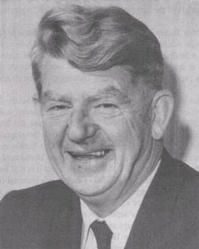


History of Research in the Bureau of Meteorology
Foreword
Preface
Introduction
Chapter 1: Germination and Growth
Chapter 2: Struggle, Competition and Emergence
The Struggle for Recognition
International Involvement
Local Cooperation
The Bureau Goes Solo
Conclusion
Retrospect
Appendix 1: Meteorology Act 1906
Appendix 2: Meteorology Act 1955
Appendix 3: Simpson Report
Appendix 4: Survey Questionnaire
Appendix 5: Bibliography
References
Index
Search
Help
Contact us

The administrative arrangements proved to be less than satisfactory. There were major disagreements between Committee members as to the direction of work within the Centre. Gibbs[32] believed that not enough was being done to transfer its results into the Bureau's operational forecasting area, whereas Tucker and Priestley were of the opinion that this was properly the responsibility of the Bureau's Research and Development Branch, leaving the Centre free to concentrate solely on research. Short-term results versus long-term goals, the Simpson dilemma exemplified, this time with the Bureau and CSIRO as the protagonists, rather than the research pool and the service branches as in Sir George Simpson's case.
There were also disputes between Tucker and Bureau management over staffing matters and the use of time on the Bureau's computers. On the one hand, Bureau management felt that it was constrained by its need to operate within the confines of the Public Service Act and the growing demands on computer time for its own operations. Tucker[78], on the other hand, believed that, as a member of the CSIRO staff and Officer-in-Charge of an independent organisation he should be able to promote Bureau staff and send them interstate or overseas when necessary, rather than be forced to wait on Bureau approval.
Despite these clashes, the actual work of the Centre on the application of numerical forecasting methods to the southern hemisphere was well received both at home and overseas, and the staff within the Centre itself worked together harmoniously. In particular, W. P. Bourke's work (then with the CSIRO) on spectral techniques laid the foundations for many of the models developed by the Centre (Priestley [66]) and their successors are now routinely run on the Bureau's new supercomputers, to provide guidance to the bench forecasters.
The initial agreement which established CMRC provided for a review of its operations at the expiry of the first five-year period. As luck would have it, this coincided with the arrival on the scene of Sir Hugh Ennor as Head of the Department of Science. The review was carried out in early 1974 by Ennor and J. R. Price, then Chairman of CSIRO, and included discussions with the members of the Management Committee, in order to gain their thoughts on the subject. It is in these submissions that the diverging views of each of the players become apparent.

People in Bright Sparcs - Ennor, Arnold Hughes; Gibbs, William James (Bill); Priestley, Charles Henry Brian (Bill); Tucker, Gilbert Brian
 |
Bureau of Meteorology |  |
© Online Edition Australian Science and Technology Heritage Centre and Bureau of Meteorology 2001
Published by Australian Science and Technology Heritage Centre, using the Web Academic Resource Publisher
http://www.austehc.unimelb.edu.au/fam/0781.html